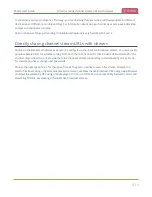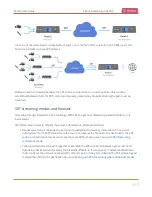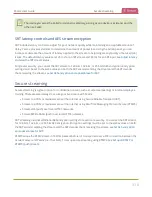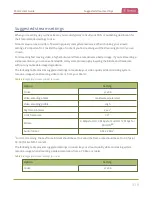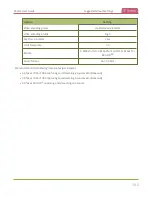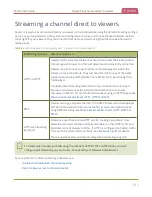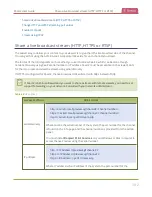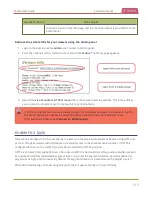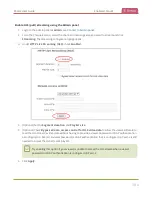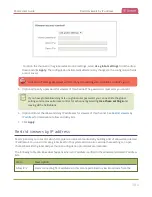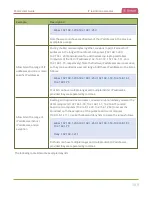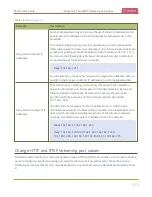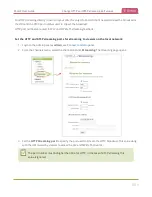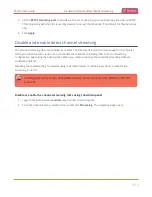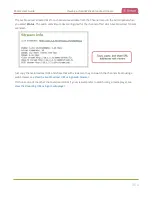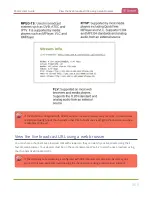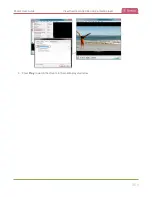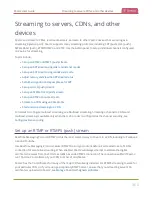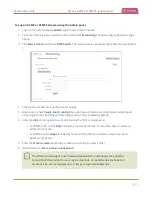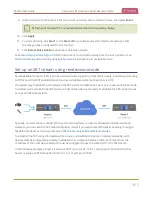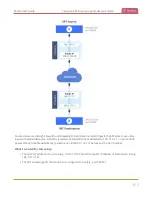
Pearl-2 User Guide
IP restriction examples
Example
Description
Allow: 192.168.1.200-192.168.1.250
Note that we could have specified two of the IP addresses in the previous
example as a range.
Allow list with a range of IP
addresses and one or more
specific IP addresses
Putting the first two examples together, we want to permit access to IP
addresses in the range of boardroom computers (192.168.1.200-
192.168.1.250) and also want to add the desktop, laptop and tablet
computers of the CEO (IP addresses 192.168.1.50, 192.168.1.51, and
192.168.1.75, respectively). Note the first two IP addresses are consecutive,
so they can be added as a second range. Add these IP addresses to the list as
follows:
Allow: 192.168.1.200-192.168.1.250, 192.168.1.50-192.168.1.51,
192.168.1.75
Your list can have multiple ranges and multiple distinct IP addresses,
provided they are separated by commas.
Allow list with a range of
IP addresses, distinct
IP addresses, and an
exception
Building on the previous examples, consider a situation where you want the
CEO’s computers (192.168.1.50, 192.168.1.51, 192.168.75) and all
boardroom computers (192.168.1.200-192.168.1.250) to access the
broadcast, with the exception of the public boardroom computer
(192.168.1.211). Use both allow and deny lists to create the rule as follows:
Allow: 192.168.1.200-192.168.1.250, 192.168.1.50-192.168.1.51,
192.168.1.75
Deny: 192.168.1.211
Both lists can have multiple ranges and multiple distinct IP addresses,
provided they are separated by commas.
The following table lists some example deny lists.
349

